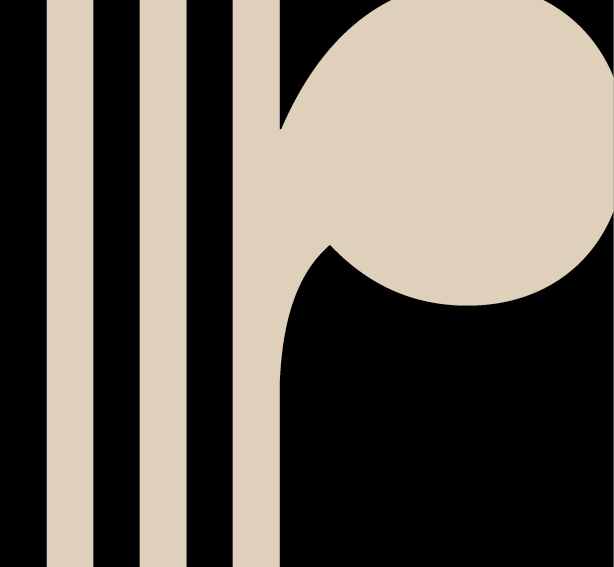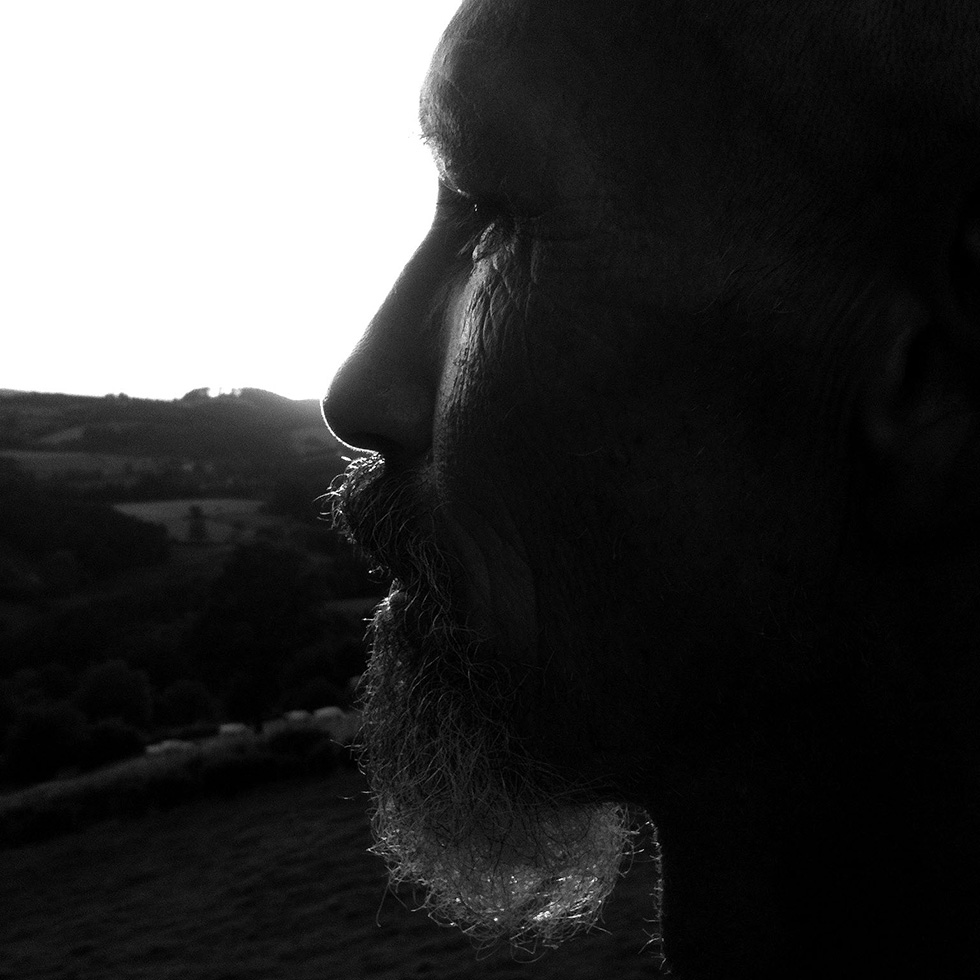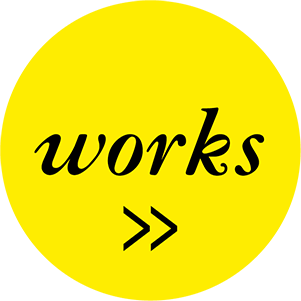01
finding the track of the iron-guarded secret to lift it with a flourish has always been the sole aim and appetite of true dedectives. whether in fictional form on screen, in books or in the real environment, the narration of bewildered presentations is pleasing to our otherwise stodgy reality, surrounded by so few mysterious situations. to the amateur, completely unaccustomed to this kind of movement, the angles and chess moves of a sniffing out of hidden traces, are alien and seem rather laborious and the path stony.
passed away in 2015, the sculptor volker ries already worked on the minimization of essential data concerning his work during his lifetime. in this sense, the almost caring rapid disposal of both his legacies and all residual traces on the net by his family completes the artist’s deed in an astounding way, forming a forensic puzzle to create a posthumous description of his work.
since most of his artworks are scattered or untraceable and few of his works have been documented, a very rough overview is offered here, especially since the artist removed the year of creation from all documents. thus, it is only possible to roughly assign the respective works to the creative periods in the three studios in which he worked. this creates a defocused impression, a one lens only pair of glasses, which nevertheless does not detract from the creative power of the sculptor. on the contrary. the disappearance winds its way through his works, his history, and develops a compelling attraction precisely because of the mysterious.
02
in his 1997 publication 7×7 (kunstkreis kusel) ries refers to the american art critic and historian rosalind krauss. building on her teacher clement greenberg, who had a formative influence on art history, and his theories on the sensually perceptible, she takes apart the artistic and theoretical ideologies of modernity in her standard work ‚the optical subconscious‘, cited by ries, in order to counter them with a discourse of her own. especially her approach to the understanding of form and how this separates a work into its factual, sensual presence and its variable meaning are the theoretical basis for ries‘ further development.
the term modern sensibility, introduced by krauss in this context, speaks of the experience of a new dialogue between the object being viewed and a form that, contrary to form being directly legible in pre-modern times, now refuses to be read. ideally, this form, according to krauss, offers both a factual, sensual level of projection and a mental one – signifier and signified, a double entity. the brilliantly crafted stonemason thus expands his artistic form options by opening up a further, conceptual level. in doing so, he sometimes gets carried away with overly top-heavy accumulations, which, however, does not detract from his diversity in material and sculptural settings.
based to this turn to conceptual movements of the 1990s, volker ries, beginning with this very publication, subordinates his works to various groups and intellectual correlations. surprisingly, this leads to the fact that he considers the year of completion of the respective work to be invalid and deletes it from the archives. the artist alone now decides whether the time-spanning combination appears more important to the viewer than its actual temporal reference. this move, possibly amounting to a disenfranchisement of the autonomous subject, does not correspond to the clarity of his primary concept – seeking the liberation of form rather than its restriction.
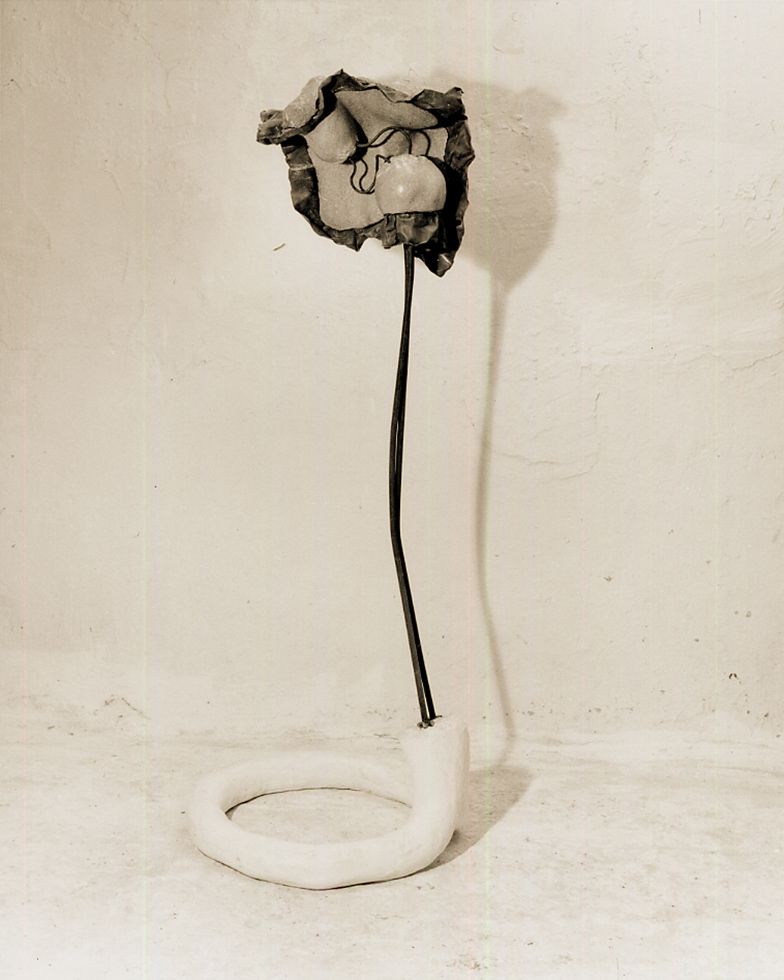
volker ries, eingebung42A
03
creativity pollinates all shades of human characters, the silent and the extroverted, the mice and yes, the shark has teeth. if there were a broad study of the long-term success of the respective suspects, one thing would certainly be proven: it is not the first races that make a horse, but its endurance. from this point of view, the money that is currently being invested in the young art market should rather be bet on a day at the races; there, in the stables and on track, the future can be judged better. many tickets might have been set on the federal youth winner in the stonemasonry trade in this picture, but he was not a horse (…the stubbornness, however, would be by all means comparable).
alternative realities based on a what-if entertain the masses, but here, too, we surely return to our boxes, culturally refreshed so to say. when christopher nolan has poured his narrative of a simultaneous forward and backward movement of time over our heads, there is a small moment in wanting to use this mobility ourselves. volker ries would have fun with that. his procedure is similar, only in a different way. while he squeezes the years of his artistic production between thumb and forefinger to a tiny moment, the fall into his own shell is a close-up slowed down to infinity. he may suffer heart failure in this maelstrom into the dark, but he will never die. the misunderstood artist has no god, he has an angel.
there is no angel of innocence and the question where absentmindness ends and mania begins is naive. creativity can at best only be called a drive, an unknown mixture of passion and the childish forgetfulness that doesn’t know this term. it is a retreat into the deepest inner world and only a few manage to rise again from this abyss and thus become successful. even prosperousness is not the goal here, but fulfillment and if we imagine the artist turning hit after hit into the stone, he is alive in this real moment and that is possibly already everything.
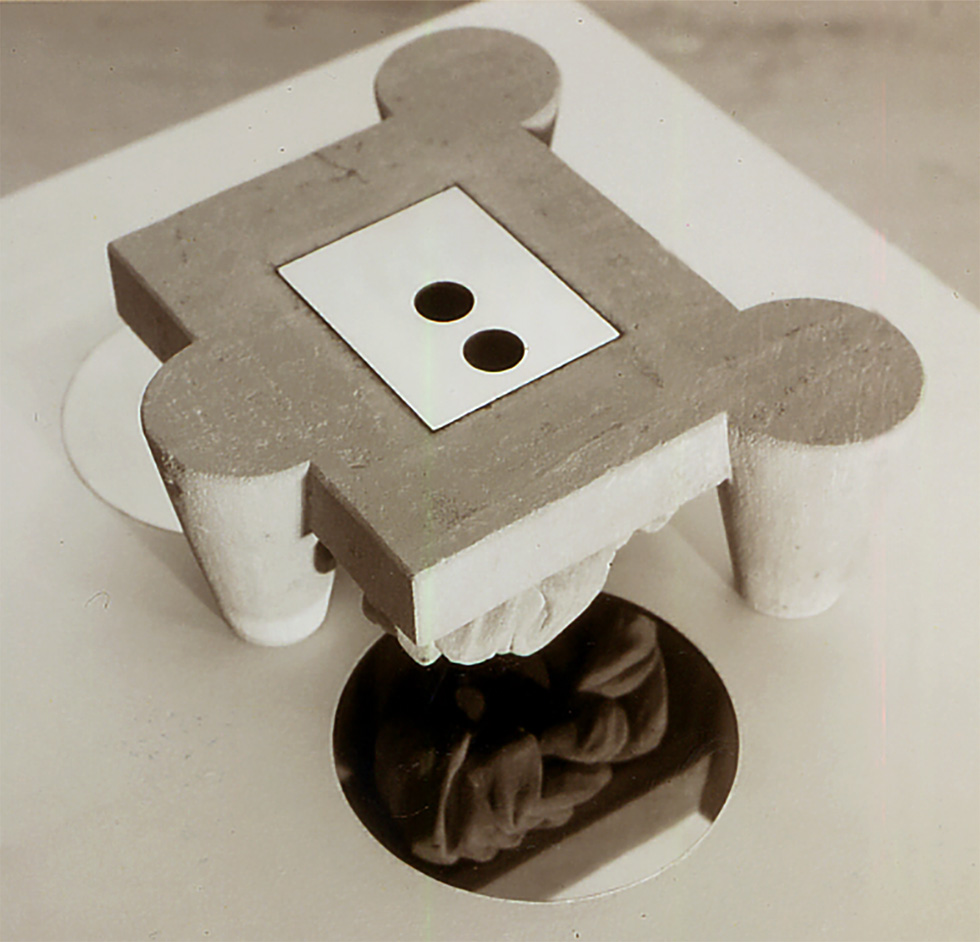
volker ries, springer2A
04
irony, the blunt weapon of cultivated cosmopolitans, was constant foundation of the artist just as craft and philosophy. whoever owns a knife also wants to cut, therefore ries‘ multilayered nature sought to wrest an additional twist from the actually immobile and ponderous stone sculpture. his canon of forms, oscillated freely between minimal 70s positions such as ulrich rückriem and giacometti’s stroke of genius ’nose‘. in the majority of cases his early works quest a spiritual process of becoming, a not-yet-being, or play with rudimentary modules of something not yet or no longer major.
as a missing link, a remnant of this vanished greater only, ries filled the gap left over with a wide range of crafty details, inspired from romanesque architecture, among other. in a pseudo-pornographic act, he cunningly placed his sculptures on mirrors, so they could watch themselves from below, with a wink of course. thus cheating the classically rigid presence of a sculptor’s work, he hung heavy art works on chains from the ceiling. a nobuyoshi araki, coincidentally in the area, would have included this photo taken in his shibari series. finally, he integrated his core elements into rotating steel constructions in order to shape extended mobility.
to escape the hard and boring standardized handling of stone his task was, or rather his game, to constantly expand his sculptural combinations by arranging wood and plastic elements of different states found in nature or simply formed industrially. it can be assumed that the artist recognized the limits of this arrangement in self-critical moments in order to avoid a hysterical, self-tracking hunt. the artist, who died at the age of 55, can no longer assemble the elements of his four decades spanning labor into a late work. thus, the narrative is obviously missing some basic elements, a labyrith chamber without a key.
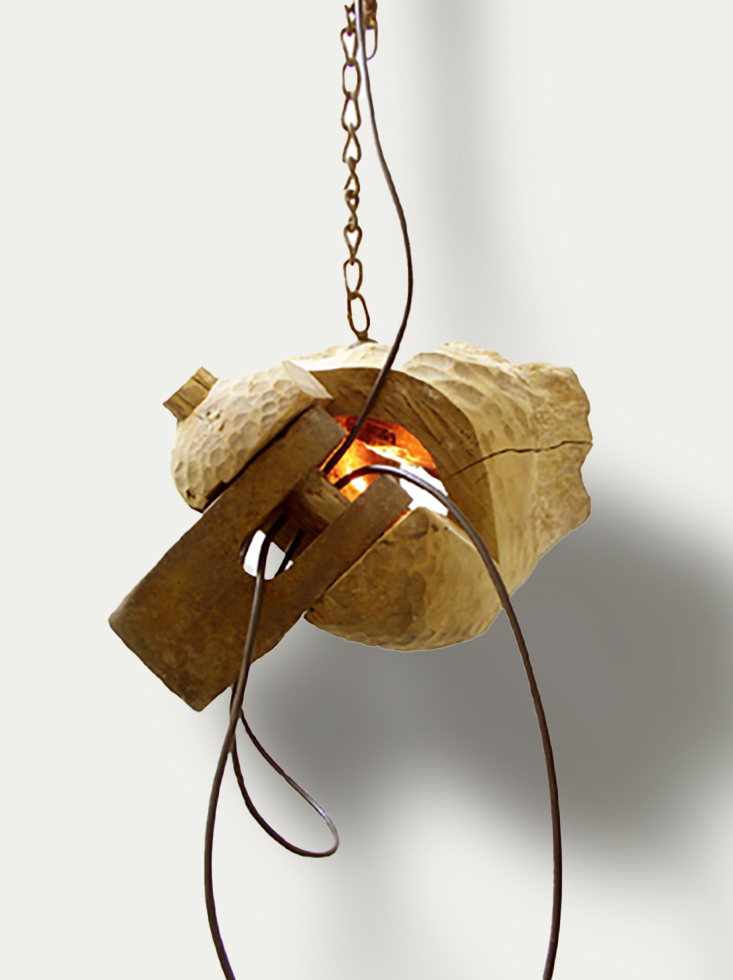
volker ries, DhängendS
05
humor, irony, cynicism – there must be a reason why the human race dances around arid fires of pure facts simmering. as ants, the foundations that sustain our species would be passed on to our descendants, and so on without any questions. ants might never invent the wheel this way or raise a whiskey sour on the latest work of anish kapoor. they simply stick to their life-sustaining facts. stoics excluded, humanity can even be grouped into these three categories. the dividing lines between humor, irony and cynicism may be small, but the respective effects on a corresponding character show worlds apart.
irony appropriates the object under discussion and at the same time distances itself from it. unsurprisingly the art scene, in search of new self-justifying concepts, cunningly made use of this means from the late 60’s on. the 80’s suddenly showed display panels, in no way inferior in size and importance to the depicted art work, whose instructional task of transforming the seen into the to-be-seen was accepted without any major grumbling. if the art critic had been occult string-puller of an educated bourgeois puppet theater up to that point only, he now co-starred on stage himself with powerful art world formulas. the clever move of using irony to evade any criticism finally ended in 2001 with the collapse of the world trade center towers, so it seemed.
once the cynical art critic presents the ironic artist, the public is left with humor only. those, having the wonderful chance to observe the post-post-ironists collecting their future masterpiece ingredients at your nearby harware store, will smirk on the remarkable fact that the eternal same-same can be detected in artists shopping carts. thus humorously strengthened, the role of volker ries’ mysterious wine box can calmly be left where it belongs. if the wink followed by a wink is answered by just another, the sequence of conceptual folds can joyously be dragged, if time and need be. ‚my irony is that of indifference, thus meta irony‘, says marcel duchamp. wham! no prisoners.
martin eugen raabenstein, 2023

volker ries, ueberleben
volker ries
1959 – 2015
01
finding the track of the iron-guarded secret to lift it with a flourish has always been the sole aim and appetite of true dedectives. whether in fictional form on screen, in books or in the real environment, the narration of bewildered presentations is pleasing to our otherwise stodgy reality, surrounded by so few mysterious situations. to the amateur, completely unaccustomed to this kind of movement, the angles and chess moves of a sniffing out of hidden traces, are alien and seem rather laborious and the path stony.
passed away in 2015, the sculptor volker ries already worked on the minimization of essential data concerning his work during his lifetime. in this sense, the almost caring rapid disposal of both his legacies and all residual traces on the net by his family completes the artist’s deed in an astounding way, forming a forensic puzzle to create a posthumous description of his work.
since most of his artworks are scattered or untraceable and few of his works have been documented, a very rough overview is offered here, especially since the artist removed the year of creation from all documents. thus, it is only possible to roughly assign the respective works to the creative periods in the three studios in which he worked. this creates a defocused impression, a one lens only pair of glasses, which nevertheless does not detract from the creative power of the sculptor. on the contrary. the disappearance winds its way through his works, his history, and develops a compelling attraction precisely because of the mysterious.
02
in his 1997 publication 7×7 (kunstkreis kusel) ries refers to the american art critic and historian rosalind krauss. building on her teacher clement greenberg, who had a formative influence on art history, and his theories on the sensually perceptible, she takes apart the artistic and theoretical ideologies of modernity in her standard work ‚the optical subconscious‘, cited by ries, in order to counter them with a discourse of her own. especially her approach to the understanding of form and how this separates a work into its factual, sensual presence and its variable meaning are the theoretical basis for ries‘ further development.
the term modern sensibility, introduced by krauss in this context, speaks of the experience of a new dialogue between the object being viewed and a form that, contrary to form being directly legible in pre-modern times, now refuses to be read. ideally, this form, according to krauss, offers both a factual, sensual level of projection and a mental one – signifier and signified, a double entity. the brilliantly crafted stonemason thus expands his artistic form options by opening up a further, conceptual level. in doing so, he sometimes gets carried away with overly top-heavy accumulations, which, however, does not detract from his diversity in material and sculptural settings.
based to this turn to conceptual movements of the 1990s, volker ries, beginning with this very publication, subordinates his works to various groups and intellectual correlations. surprisingly, this leads to the fact that he considers the year of completion of the respective work to be invalid and deletes it from the archives. the artist alone now decides whether the time-spanning combination appears more important to the viewer than its actual temporal reference. this move, possibly amounting to a disenfranchisement of the autonomous subject, does not correspond to the clarity of his primary concept – seeking the liberation of form rather than its restriction.
03
creativity pollinates all shades of human characters, the silent and the extroverted, the mice and yes, the shark has teeth. if there were a broad study of the long-term success of the respective suspects, one thing would certainly be proven: it is not the first races that make a horse, but its endurance. from this point of view, the money that is currently being invested in the young art market should rather be bet on a day at the races; there, in the stables and on track, the future can be judged better. many tickets might have been set on the federal youth winner in the stonemasonry trade in this picture, but he was not a horse (…the stubbornness, however, would be by all means comparable).
alternative realities based on a what-if entertain the masses, but here, too, we surely return to our boxes, culturally refreshed so to say. when christopher nolan has poured his narrative of a simultaneous forward and backward movement of time over our heads, there is a small moment in wanting to use this mobility ourselves. volker ries would have fun with that. his procedure is similar, only in a different way. while he squeezes the years of his artistic production between thumb and forefinger to a tiny moment, the fall into his own shell is a close-up slowed down to infinity. he may suffer heart failure in this maelstrom into the dark, but he will never die. the misunderstood artist has no god, he has an angel.
there is no angel of innocence and the question where absentmindness ends and mania begins is naive. creativity can at best only be called a drive, an unknown mixture of passion and the childish forgetfulness that doesn’t know this term. it is a retreat into the deepest inner world and only a few manage to rise again from this abyss and thus become successful. even prosperousness is not the goal here, but fulfillment and if we imagine the artist turning hit after hit into the stone, he is alive in this real moment and that is possibly already everything.
04
irony, the blunt weapon of cultivated cosmopolitans, was constant foundation of the artist just as craft and philosophy. whoever owns a knife also wants to cut, therefore ries‘ multilayered nature sought to wrest an additional twist from the actually immobile and ponderous stone sculpture. his canon of forms, oscillated freely between minimal 70s positions such as ulrich rückriem and giacometti’s stroke of genius ’nose‘. in the majority of cases his early works quest a spiritual process of becoming, a not-yet-being, or play with rudimentary modules of something not yet or no longer major.
as a missing link, a remnant of this vanished greater only, ries filled the gap left over with a wide range of crafty details, inspired from romanesque architecture, among other. in a pseudo-pornographic act, he cunningly placed his sculptures on mirrors, so they could watch themselves from below, with a wink of course. thus cheating the classically rigid presence of a sculptor’s work, he hung heavy art works on chains from the ceiling. a nobuyoshi araki, coincidentally in the area, would have included this photo taken in his shibari series. finally, he integrated his core elements into rotating steel constructions in order to shape extended mobility.
to escape the hard and boring standardized handling of stone his task was, or rather his game, to constantly expand his sculptural combinations by arranging wood and plastic elements of different states found in nature or simply formed industrially. it can be assumed that the artist recognized the limits of this arrangement in self-critical moments in order to escape a hysterical, self-tracking hunt. the artist, who died at the age of 55, can no longer assemble the elements of his four decades spanning labor into a late work. thus, the narrative is obviously missing some basic elements, a labyrith chamber without a key.
05
humor, irony, cynicism – there must be a reason why the human race dances around arid fires of pure facts simmering. as ants, the foundations that sustain our species would be passed on to our descendants, and so on without any questions. ants might never invent the wheel this way or raise a whiskey sour on the latest work of anish kapoor. they simply stick to their life-sustaining facts. stoics excluded, humanity can even be grouped into these three categories. the dividing lines between humor, irony and cynicism may be small, but the respective effects on a corresponding character show worlds apart.
irony appropriates the object under discussion and at the same time distances itself from it. unsurprisingly the art scene, in search of new self-justifying concepts, cunningly made use of this means from the late 60’s on. the 80’s suddenly showed display panels, in no way inferior in size and importance to the depicted art work, whose instructional task of transforming the seen into the to-be-seen was accepted without any major grumbling. if the art critic had been occult string-puller of an educated bourgeois puppet theater up to that point only, he now co-starred on stage himself with powerful art world formulas. the clever move of using irony to evade any criticism finally ended in 2001 with the collapse of the world trade center towers, so it seemed.
once the cynical art critic presents the ironic artist, the public is left with humor only. those, having the wonderful chance to observe the post-post-ironists collecting their future masterpiece ingredients at your nearby harware store, will smirk on the remarkable fact that the eternal same-same can be detected in artists shopping carts. thus humorously strengthened, the role of volker ries’ mysterious wine box can calmly be left where it belongs. if the wink followed by a wink is answered by just another, the sequence of conceptual folds can joyously be dragged, if time and need be. ‚my irony is that of indifference, thus meta irony‘, says marcel duchamp. wham! no prisoners.
martin eugen raabenstein, 2023
